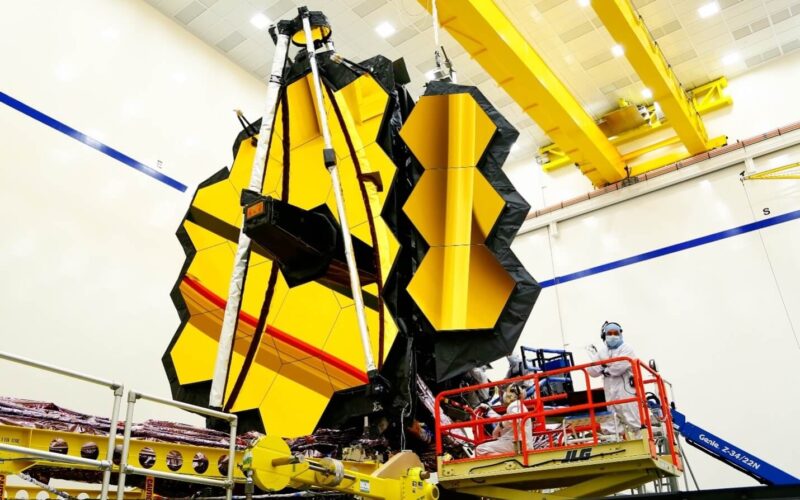The NASA James Webb Space Telescope is now fully deployed after successfully unfolding its mirror, the space agency announced on January 8, 2022.
The world’s most powerful space telescope, a venture between NASA and its European and Canadian counterparts, is the successor to the Hubble telescope and will explore every stage of cosmic history.
The deployment of the telescope’s 21-foot, gold-coated primary mirror was the final stage of all its major spacecraft deployments as it prepares for science operations.
Since launching into space on December 25, 2021, engineers have completed 50 major deployments, including that of its sunshield and the mirror support structures.
“The successful completion of all of the Webb Space Telescope’s deployments is historic,” said Gregory L. Robinson, Webb program director at NASA Headquarters, in a press statement. “This is the first time a NASA-led mission has ever attempted to complete a complex sequence to unfold an observatory in space – a remarkable feat for our team, NASA, and the world.”
#NASAWebb is fully deployed!
— NASA Webb Telescope (@NASAWebb) January 8, 2022
With the successful deployment & latching of our last mirror wing, that’s:
50 major deployments, complete.
178 pins, released.
20+ years of work, realized.
Next to #UnfoldTheUniverse: traveling out to our orbital destination of Lagrange point 2! pic.twitter.com/mDfmlaszzV
However, we still have to wait for images from the James Webb telescope, which aims to look back over 13.5 billion years to capture infrared light from celestial objects. While it is fully deployed, its instruments now require aligning and it also needs to reach its orbital destination.
NASA said ground engineers will command 126 actuators on the 18 primary segments of the mirror to align the telescope optics. This will take months to complete and then the scientific instruments will need to be calibrated before Webb can deliver its first images this summer.
In addition, Webb needs to reach its orbit around the second Lagrange point, known as L2, which is situated nearly 1 million miles from Earth. NASA explained that this position allows the telescope’s sunshield to protect it from light from the Sun, Earth, and Moon that could interfere with observations of infrared light.

